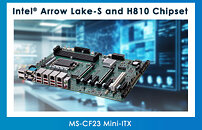System76 Updates Its Meerkat Linux Mini PCs with Intel Raptor Lake or Arrow Lake CPUs
System76 has refreshed its compact Linux mini PC range with the Meerkat meer10. This new model keeps the small size of its predecessor while bringing faster CPUs, up-to-date storage, and better connectivity. The Meerkat meer10 measures 117 mm x 112 mm x 54 mm and operates on Pop!_OS 22.04 LTS, Ubuntu 22.04 LTS, or Ubuntu 24.04 LTS. System76 offers three processor configurations: Intel Core 3 100U with 6 cores operating up to 4.7 GHz, Intel Core Ultra 5 225H with 14 cores at 4.9 GHz, and Intel Core Ultra 7 255H featuring 16 cores with maximum speeds of 5.1 GHz.
Graphics performance varies by configuration, the Core 3 100U uses integrated Intel Graphics, while the Ultra 5 employs Intel Arc 130T GPU and the Ultra 7 incorporates Intel Arc 140T GPU. The Arc GPU configurations require dual SO-DIMM memory modules for proper operation. Memory capacity reaches 96 GB using dual-channel DDR5 5600 MHz configuration. Storage is also dependent on the CPU architecture. The Core 3 100U supports two M.2 PCIe Gen 4 NVMe drives, while Ultra 5 and Ultra 7 models accommodate one M.2 PCIe Gen 5 NVMe drive and one M.2 PCIe Gen 4 NVMe drive. All configurations include an additional M.2 2242 PCIe Gen4x4 slot for SSD expansion, with total storage capacity reaching 10 TB.
Graphics performance varies by configuration, the Core 3 100U uses integrated Intel Graphics, while the Ultra 5 employs Intel Arc 130T GPU and the Ultra 7 incorporates Intel Arc 140T GPU. The Arc GPU configurations require dual SO-DIMM memory modules for proper operation. Memory capacity reaches 96 GB using dual-channel DDR5 5600 MHz configuration. Storage is also dependent on the CPU architecture. The Core 3 100U supports two M.2 PCIe Gen 4 NVMe drives, while Ultra 5 and Ultra 7 models accommodate one M.2 PCIe Gen 5 NVMe drive and one M.2 PCIe Gen 4 NVMe drive. All configurations include an additional M.2 2242 PCIe Gen4x4 slot for SSD expansion, with total storage capacity reaching 10 TB.





























































